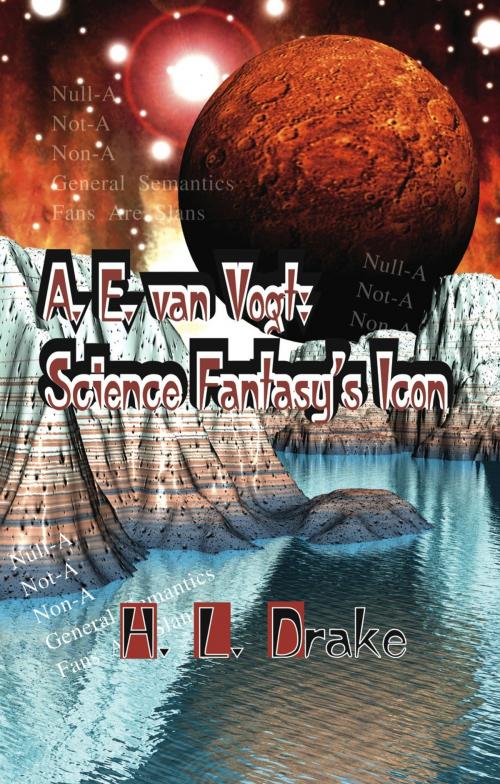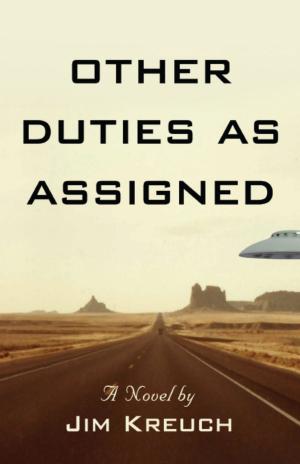| Author: | H. L. Drake | ISBN: | 9781609103255 |
| Publisher: | BookLocker.com, Inc. | Publication: | January 1, 2002 |
| Imprint: | Language: | English |
| Author: | H. L. Drake |
| ISBN: | 9781609103255 |
| Publisher: | BookLocker.com, Inc. |
| Publication: | January 1, 2002 |
| Imprint: | |
| Language: | English |
A. E. van Vogt: Science Fantasy's Icon presents a study of select works by van Vogt and some limited biographical data.
The main thrust of this book is to explain how, and why, van Vogt's various real life interests were often included in his fiction and nonfiction. Van Vogt went to work immediately after finishing high school in Canada, but he devoted the rest of his life to self-education. Van Vogt believed that his eye sight could be improved by using the William Bates training methods; van Vogt devised a dream/sleep system whereby he was awakened during the night to continue working on stories and increase his writing output; he interviewed males who were deemed to be violent-types; he studied the accumulation of wealth and wrote a book about it; and, van Vogt applied semantics theories to his everyday life and gave public lectures about how words can affect personal mental health as well as communication with others.
Much of A. E. van Vogt: Science Fantasy's Icon is centered around van Vogt's personal interest in, and use of, Alfred Korzybski's general semantics, which is a theory about how to communicate in more sane and healthy ways with one's self and others.
Before he moved from Canada to Hollywood, California in the 1940's, van Vogt had read Korzybski's basic work on general semantics. Subsequently, van Vogt incorporated some of his understandings about general semantics into a story titled "The World Of A"(with a bar over the A) which was originally published as a serialized novel. "The World Of A," and it's sequel, "The Players Of A"(with a bar over the A) have gone through many reprints over the decades; reprints use "Null-A" in the titles instead of the General Semantics Institute's copyrighted bar over the A symbol. Near the end of his writing career van Vogt produced a third general semantics novel, "Null-A3."
Beginning in the mid-1970's, H. L. Drake interviewed van Vogt in Hollywood; general semantics was the point of departure, although, discussions included various socio-political-religious-economic thoughts about people, places and situations whether or not they were directly related to science fantasy/science fiction. Some of what was said during those discussions is interwoven throughout A. E. van Vogt: Science Fantasy's Icon and offers behind the scenes insights into how and why van Vogt wrote some of his books.
Over the years, H. L. Drake has interviewed science fiction authors about van Vogt. John Brunner, Hal Clement, James Gunn and Jack Williamson provided views that are reflected in this book. In addition, Forrest Ackerman--van Vogt's long time agent and friend--shared his thoughts about the man who had discovered the "sevagram" which may be found among the stars of universe(s).
A. E. van Vogt: Science Fantasy's Icon presents a study of select works by van Vogt and some limited biographical data.
The main thrust of this book is to explain how, and why, van Vogt's various real life interests were often included in his fiction and nonfiction. Van Vogt went to work immediately after finishing high school in Canada, but he devoted the rest of his life to self-education. Van Vogt believed that his eye sight could be improved by using the William Bates training methods; van Vogt devised a dream/sleep system whereby he was awakened during the night to continue working on stories and increase his writing output; he interviewed males who were deemed to be violent-types; he studied the accumulation of wealth and wrote a book about it; and, van Vogt applied semantics theories to his everyday life and gave public lectures about how words can affect personal mental health as well as communication with others.
Much of A. E. van Vogt: Science Fantasy's Icon is centered around van Vogt's personal interest in, and use of, Alfred Korzybski's general semantics, which is a theory about how to communicate in more sane and healthy ways with one's self and others.
Before he moved from Canada to Hollywood, California in the 1940's, van Vogt had read Korzybski's basic work on general semantics. Subsequently, van Vogt incorporated some of his understandings about general semantics into a story titled "The World Of A"(with a bar over the A) which was originally published as a serialized novel. "The World Of A," and it's sequel, "The Players Of A"(with a bar over the A) have gone through many reprints over the decades; reprints use "Null-A" in the titles instead of the General Semantics Institute's copyrighted bar over the A symbol. Near the end of his writing career van Vogt produced a third general semantics novel, "Null-A3."
Beginning in the mid-1970's, H. L. Drake interviewed van Vogt in Hollywood; general semantics was the point of departure, although, discussions included various socio-political-religious-economic thoughts about people, places and situations whether or not they were directly related to science fantasy/science fiction. Some of what was said during those discussions is interwoven throughout A. E. van Vogt: Science Fantasy's Icon and offers behind the scenes insights into how and why van Vogt wrote some of his books.
Over the years, H. L. Drake has interviewed science fiction authors about van Vogt. John Brunner, Hal Clement, James Gunn and Jack Williamson provided views that are reflected in this book. In addition, Forrest Ackerman--van Vogt's long time agent and friend--shared his thoughts about the man who had discovered the "sevagram" which may be found among the stars of universe(s).















